The Ultimate Vietnam Backpacking Guide (1 Month Itinerary)
This post may contain affiliate links. If you make a purchase using one of these links, I may receive a small reward at no extra cost to you. See my Disclosure Policy for more information.
Backpacking in Vietnam is a rite of passage. Whether iht’s your first time abroad or you’re a seasoned traveler, Vietnam’s diversity has something in store for you.
Beaches, cities, jungles, deltas, temples, rice paddies, summer, winter, spring and fall, coffee, sandwiches, noodle soups and spring rolls, markets, boat rides, war sites, imperial palaces… Vietnam is eclectic and varied.
Which is why you need a full month to see everything. Can you “feel” Vietnam in a week or two? Certainly. I will also give you insights on what to skip if you’re short on time.
Overcommercialized attractions, scams, tourist traps, boring cities, crazy traffic, rude vendors… yes, that’s still Vietnam – I won’t only sing praises and spare the ugly.
As to all the other logistics of backpacking in Vietnam – transportation, food, visa, internet, security, etc. – below you can find my practical tips and advice from 3 trips to Vietnam totaling 2.5 months in the country.

1 Month Vietnam Itinerary at a Glance
Below is a sample 1 month itinerary for Vietnam featuring the most noteworthy places in the country. Distances in Vietnam are quite long and you will be doing the entire length of the country with this itinerary.
Transportation is somewhat included in the calculations but ultimately depends on your willingness to take overnight buses or flights, the timetable of trains, and how much you enjoy long-distance travel in Vietnam. If you feel it’s too many places, the ones with “S” next to them are “Skippable”.
- Ho Chi Minh City (2 days)
- (S) Can Tho + Mekong River Delta (2 days)
- (S) Mui Ne (1 day)
- (S) Da Lat (2 days)
- (S) Nha Trang (1 day)
- (S) Da Nang (2 days)
- Hoi An (3 days)
- (S) Hue (1 day)
- (S) Phong Nha (1 day)
- Ninh Binh / Tam Coc (2 days)
- Sapa (3 days)
- Ha Giang Loop (5 days)
- Ha Long Bay (1 day)
- Hanoi (3 days)
North to South or South to North?
With Vietnam being so long, a frequent question is whether one should start north (in Hanoi) and go south (end in Ho Chi Minh City) or vice versa.
Usually, the answer given is to go South to North because “it gets better” – Vietnam’s North is more attractive, more diverse, and more interesting.
I agree with that and with all things being equal, it should be your choice.
BUT!
Factors such as flight prices, planning a visit to neighboring countries like Laos and Cambodia, weather, and time constraints may twist your hand in either direction.
The bottom line is that it doesn’t matter all that much. Pick whichever makes more economical and logistical sense for you. For me, it was South to North, so this is the itinerary I will share with you. But if it’s the opposite for you – just flip everything the other way.
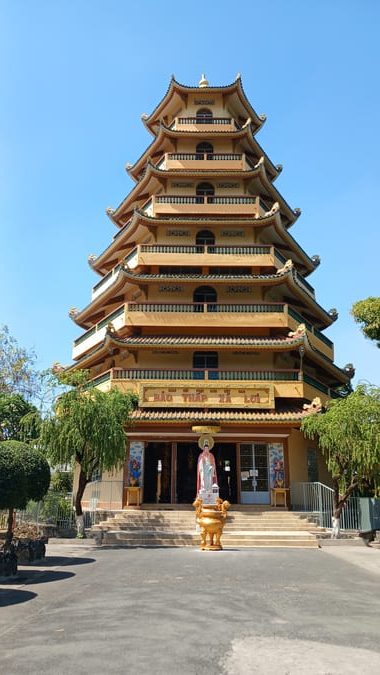
1 Month Itinerary for Vietnam (South to North)
When you see the itinerary at a glance, 2 things stand out:
- The days overlap
- Some places only get a single day
The reason for both is the same – transport. If you take overnight buses, you will have more time. If you travel during the day, consider skipping a few of the places (the places I consider skippable are marked with “S” in the list above).
I will not go into details about when and how to book transport – buses are readily available for practically all routes in Vietnam and booking is incredibly simple.
So if you want to spend longer at a certain place – by all means, do! Adapt the itinerary to your own needs!
Day 1-2: Ho Chi Minh City
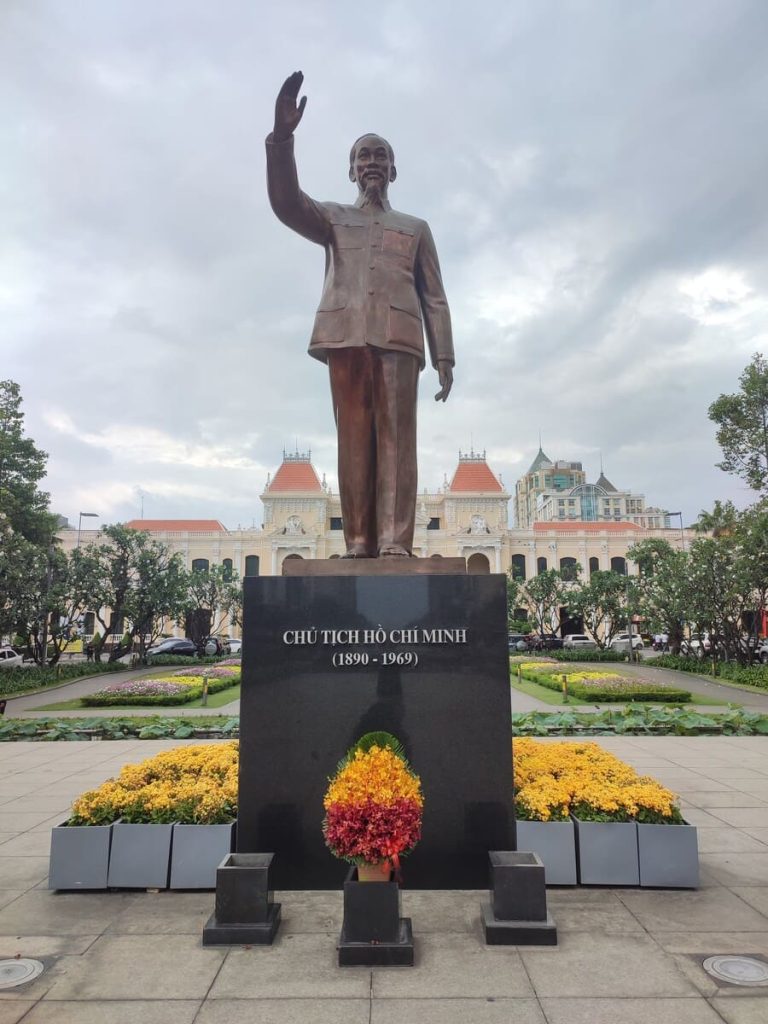
Ho Chi Minh City, more commonly known by locals as Saigon, is the biggest city in Vietnam. Unfortunately, the war and consequent rebuilding in a Communist utilitarian style, saw much of its heritage erased.
I like that city anyway. It’s not as charismatic as Hanoi but it’s chaotic in the most interesting ways. My favorite activity in Saigon is to wake up early (think 7 AM) and observe the locals on any busy street in District 1. The mornings are the most active in Ho Chi Minh City.
You can check my dedicated article about spending 1 day in Ho Chi Minh City. It will take you to what’s left of the French colonial times, busy markets, trendy areas, interesting lesser-known places, and the notorious Bui Vien party street.
The two other must-sees while in Saigon are:
- Cu Chi Tunnels
- Mekong Delta
The Cu Chi Tunnels are worth a half-day trip even if they have become a bit overcommercialized. I have yet to see something similar anywhere else in the world (which is good, as the tunnels are a result of war). You can go by yourself by taking bus #13 from Ho Chi Minh Bus Station in the center of town or go on this Half-Day Cu Chi Tunnels Tour.
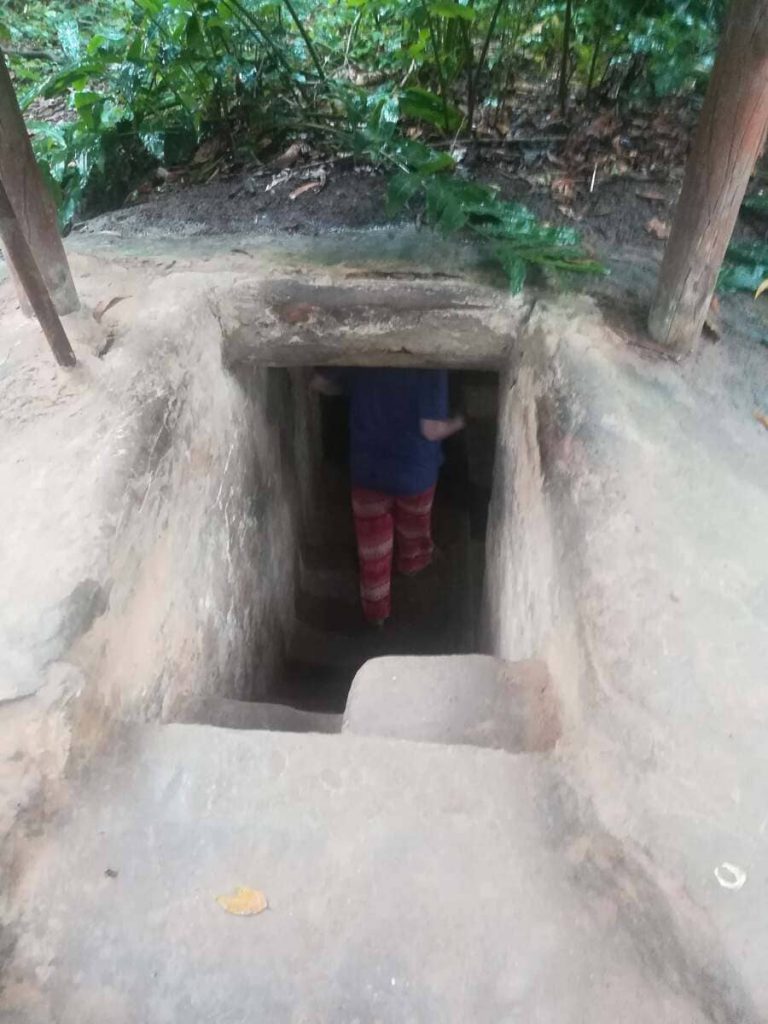
As for the Mekong Delta, the region is way too charming to go on a day tour only. Most of those tours have you traveling for 10+ hours and exploring for a mere 2-3. You’re better off going yourself for a few days, which is the next step in this itinerary…
Day 2-4: Can Tho and Mekong River Delta

I was quite surprised to find out that Can Tho is the 4th biggest city in Vietnam. It’s also very tidy (in typical communist style but way more than the top 3), slow, and pretty. It doesn’t sit on the Mekong but is considered the gateway to the Mekong Delta.
It is here that countless tour groups come to visit the Cai Rang Floating Market. Bad news – it’s all but dead for regular commerce, kept half-alive as a tourist attraction, thus fake and a little boring.
Other floating markets in the Delta are also dead or dying – the Pandemic hit them so hard, that they never reopened. Although the real reasons are half-economic too – it’s just cheaper to transport goods overland nowadays.
But the slow way of life in the region hasn’t changed. If you want to experience a bit of it, go to An Binh Island (regular buses go from Can Tho, take 1 hour and cost around 40.000 VND). It’s rural in the best of ways, with a network of canals crisscrossing the island.
Take a bicycle for a day to explore the area. This is the Mekong Delta! Not the polished, perfumed “coconut candy factory” or “fruit farm”, or “rice paper factory”, etc. that organized tours bring you to.
An alternative to An Binh is Ben Tre where you can experience the same slow way of living in South Vietnam.
Can Tho is marked as skippable but that’s only because you can book a day tour to the Mekong Delta if you’re short on time.

Day 4-5: Mui Ne
Mui Ne is now an overcommercialized fishing town with pretty dunes and peculiar natural shapes and forms.
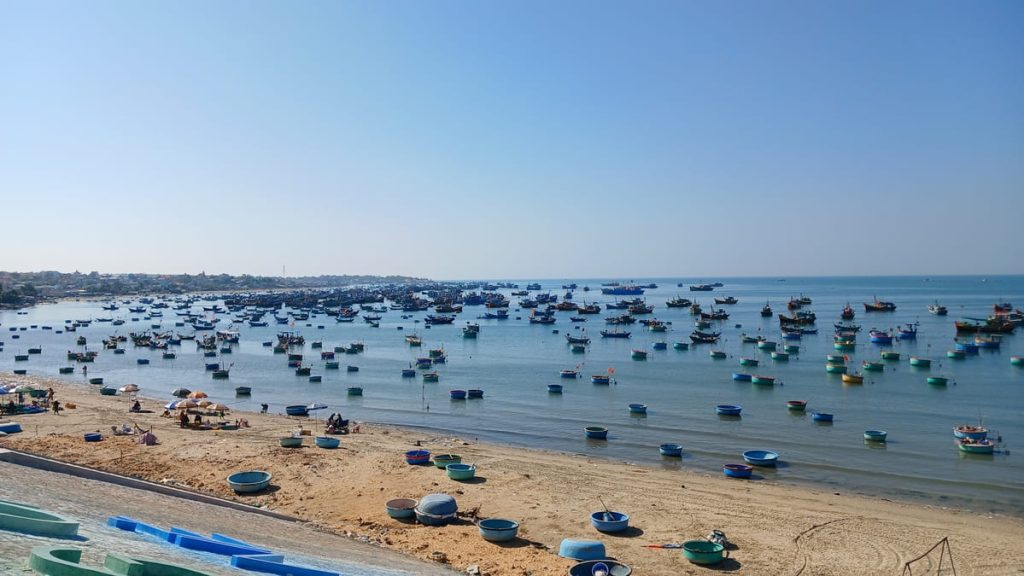
If you decide to make a stop in Mui Ne (1 day is enough), rent a scooter for a day to visit all its attractions:
- The Fishing Village with the picturesque boats floating close to the shore.
- The Fairy Stream where you get to walk in an ankle-deep river surrounded by peculiar natural shapes and colors.
- The Red Sand Dunes where you can pretend to be a world-famous sand skateboarder.
- The White Sand Dunes where you can drive an ATV for sunrise over a large expanse of perfectly white sand.
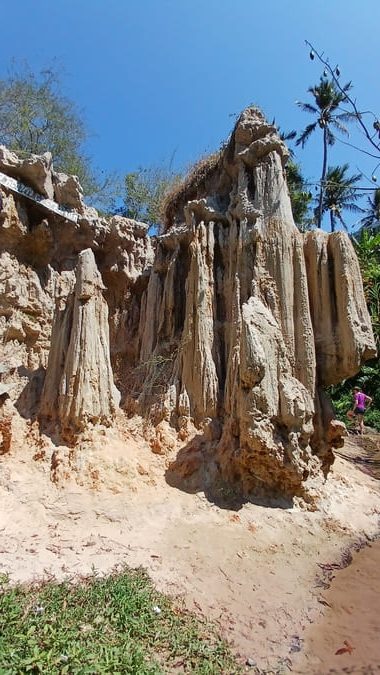
Day 5-7: Da Lat
Da Lat, due to its altitude and mild climate, is known as the City of Eternal Spring. It’s cool both weather-wise and culture-wise. I’ve marked it as skippable only because it’s a little out of the way but I bet you, like me, will love this place.
Check out all the reasons I love Da Lat.
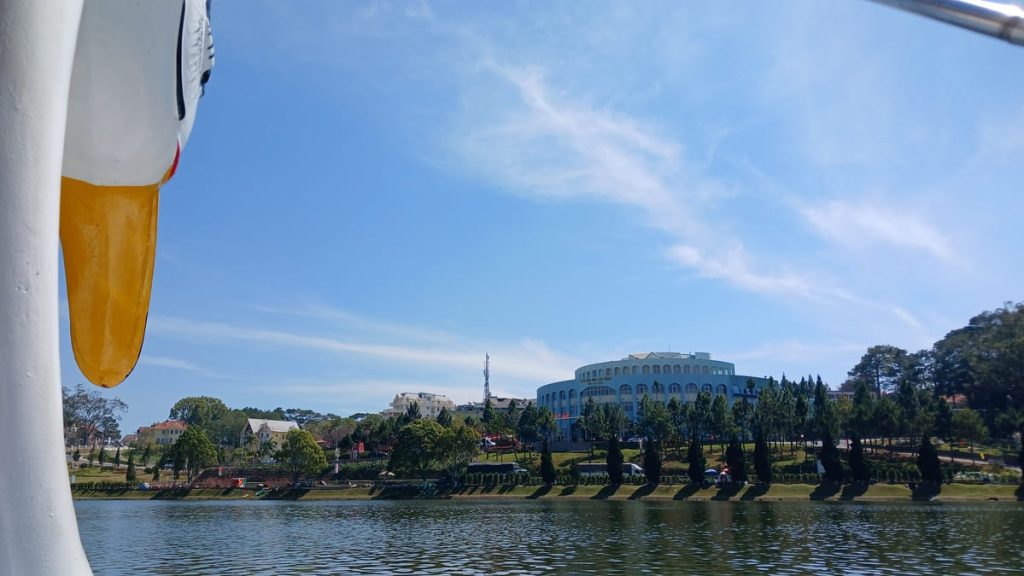
Make sure you visit:
- Xuan Huong Lake and rent a pedal boat.
- Datanla Alpine Rollercoaster and have a blast speeding downhill in a bobsleigh-styled cart.
- The Crazy House and wonder if Antoni Gaudi had a long holiday in Da Lat at some point.
- Da Lat’s Night Market and try a Vietnamese Pizza (Bánh Tráng Nướng ain’t nothing like a pizza but is nice)
- Maze Bar and get lost in its twisted corridors and secret coves (my favorite place, super fun!)
- Linh Ẩn Pagoda and get blinded by a ridiculously white gargantuan Lady Buddha statue.
- Thác Voi Waterfall for some refreshing water spray.
Don’t forget to have some strawberries and coffee – the specialties here.
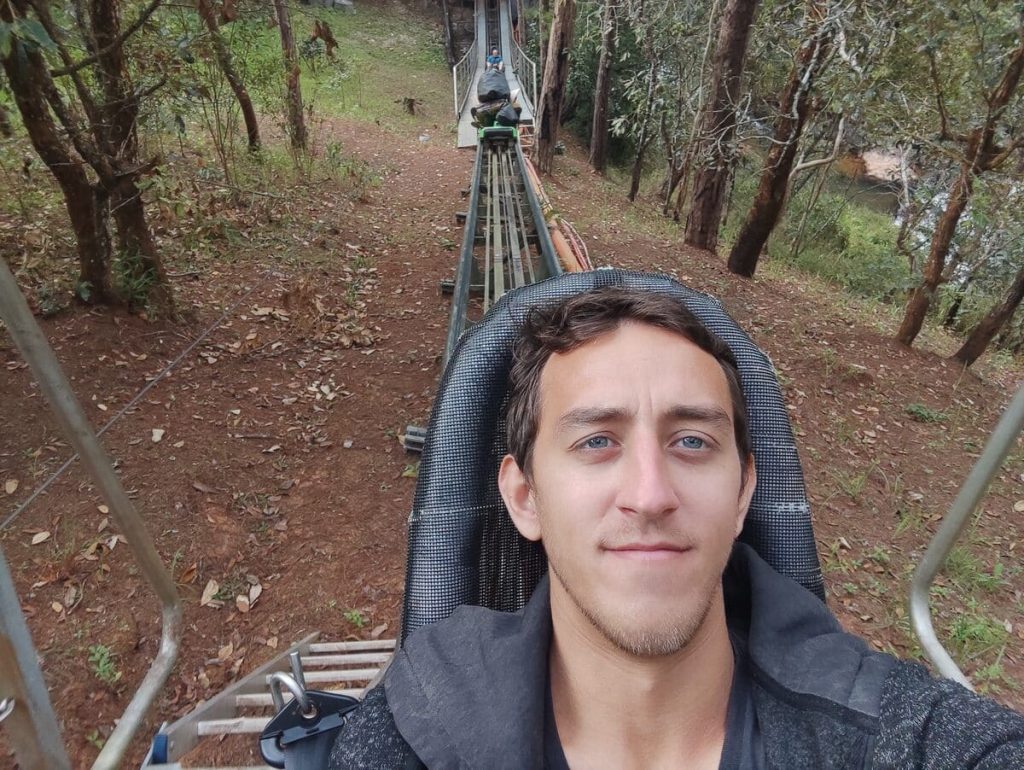
Day 7-8: Nha Trang
Nha Trang is the Russian-Southeast-Asian seaside resort. This is where the default foreign language is Russian, not English. I’m glad I know a few words to haggle with the local vendors…
Nha Trang has a nice beach, although it’s pretty busy all the time. People also come here for the Vinpearl Resort on the nearby island, but it’s not the most backpackery type of place.

The distance between Da Lat and Da Nang is quite long so Nha Trang is a good way to split up the journey.
You may notice that it’s another “skippable” place in South Vietnam – yes, if you’re short on time, it’s best to fly from Ho Chi Minh City directly to Da Nang and continue your Vietnamese adventures northbound.
If you decide to visit Nha Trang, check out these places:
- Ponagar Temple – a remnant of Champa – a pre-Vietnamese Hindu Kingdom that ruled the region.
- Long Son Pagoda – unless you’re fed up with identical pagodas already – I know I was…
- The Yersin Museum – Alexandre Yersin, the Swiss-French scientist who discovered the bacteria responsible for the bubonic plague (named after him – Yersinia Pestis), lived a long time in Nha Trang. He founded Da Lat, by the way. Held in very high regard in Vietnam.
- The Beach, unless the waves are higher than you.
- The Night Market – here’s the cheapest dried mango in all of Vietnam! I bought 500g for just 40.000 VND (1.5 USD).

Day 8-10: Da Nang
Da Nang often gets overlooked in favor of Hoi An. However, they are so different, you really shouldn’t be choosing between them. Also, you can totally flip them, i.e. visit Hoi An first, depending on what bus or train you take from Nha Trang.

Yes, it’s not the most exciting city and there aren’t a ton of unique things to do, but it’s well-organized, has a marvelous beach strip, and is pretty cheap for a big city.
Those of you in a hurry can spend less time in Da Nang – the 2 allocated days are because it takes 10-12 hours to reach from Nha Trang, which can eat a whole day if you don’t travel overnight.
In Da Nang, make sure you visit:
- Chùa Linh Ứng to compare this big Lady Buddha to the one near Da Lat.
- Ban Co Peak for awesome views towards Da Nang.
- Marble Mountain for some more awesome temples and religious caves.
- Bac My An Market for cheap and delicious local food and delicacies.
- Da Nang History Museum.
- The Son Tra Night Market for some delicious seafood dinner.
- The Dragon Bridge Fire Show.
- Take a boat ride at night on the Han River.
- My Khe Beach.
- A day trip to Ba Na Hills.
- A day trip on the Hai Van Pass.
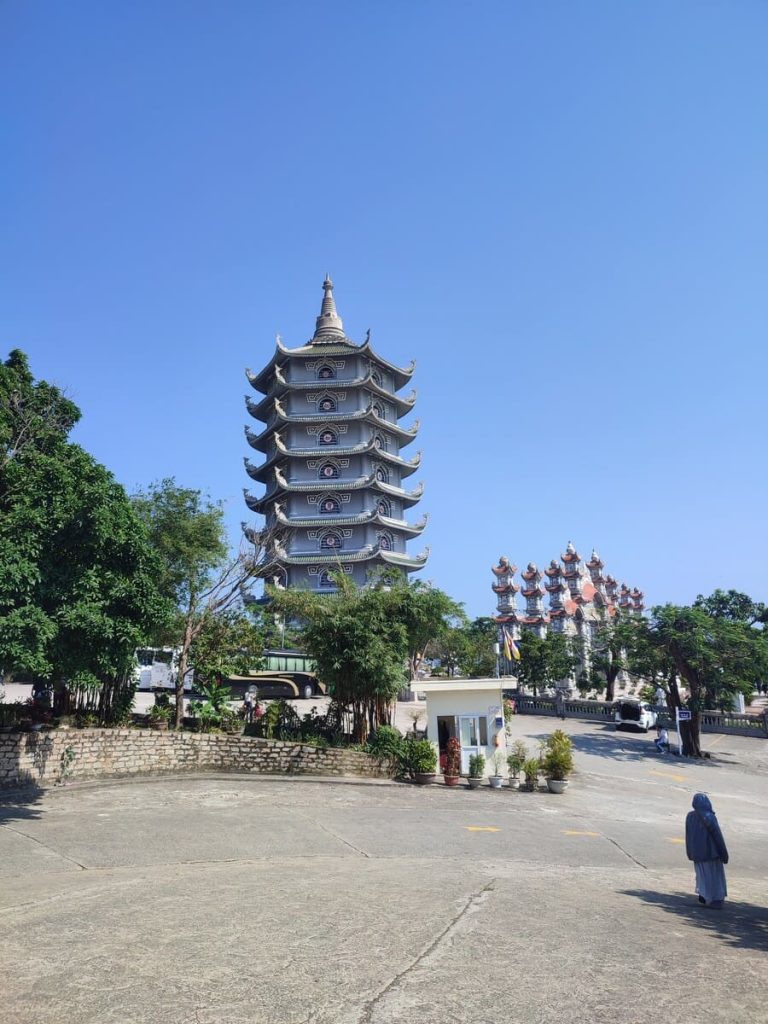
Day 10-13: Hoi An
Hoi An is the old-timey Vietnamese village that almost got completely destroyed but wasn’t (read up about Kazimierz Kwiatkowski), and is now a prime tourist destination.
Preserved architecture, cute canals and boats, temples, heritage, an island… it’s all just soooo pretty.
But pretty means popular. So, so popular. It’s usually difficult to even walk on the main street in Hoi An as there are just way too many tourists. But that’s mass tourism for you.

This place is also incredibly overpriced as vendors never budge from the high prices they’ve stubbornly set, because if you don’t buy, there are plenty of day-tourers who would find it cheap and fork out 3$ for a damn keychain.
So yeah, Hoi An is amazing but also horrible. See my full take on whether Hoi An is a tourist trap.
While in Hoi An, make sure to visit (all walking distance from one another):
- The Old Town
- Hoi An Bridge
- Chùa Cầu, aka the Japanese Bridge (assuming it’s reopened after restoration)
- Cẩm Phô Communal House
- Hoi An Market
- Hoi Quan Phuoc Kien
- Join a Lantern-Making Workshop
- Join a Cooking Class
- Ride a boat at night and release flower-shaped lanterns in the river (5/5 pretty score)

And if you stay a few days, rent a scooter to visit these places:
- My Son Sanctuary – another Champa Kingdom remnant but much bigger than Ponagar in Nha Trang. It’s also a UNESCO heritage site, one of the few in Vietnam.
- Go basket-boat-riding in the Coconut Forest.
- Check out the Thanh Ha Pottery Village.
- Go to the Cham Islands for a few days.
- Rent a bicycle and just explore the countryside.
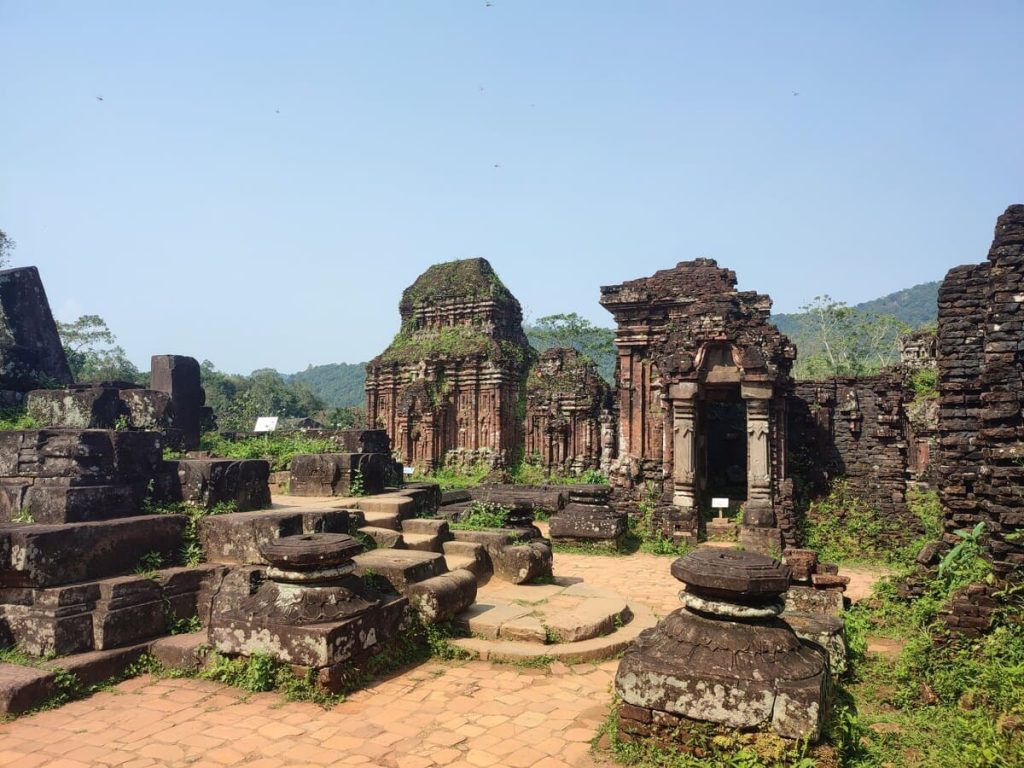
Day 13-14: Hue
Hue is the old Imperial Capital boasting the ruins of the Imperial City and a few Royal Tombs.

Hue is every history buff’s wet dream. You see, Vietnam during the 19th century was a thriving empire and the Nguyen Dynasty built a lot in Hue to show their subjects and the wider world just how prosperous their Kingdom was.
Now the bad part is that a lot of what they built was destroyed in the numerous wars Vietnam has seen since then. Much of the Imperial City lies in ruins. Yes, there are constant restoration works, but quite slow, so very slow.
Outside of the Imperial City, visit these Royal places in Hue:
- Mausoleum of Emperor Tu Duc
- Mausoleum of Emperor Dong Khanh
- Thien Mu Pagoda
- Chùa Từ Hiếu temple
- Bao Lam Pagoda
- Incense Village
- Take a day trip to the DMZ from the Vietnam-American War
And of course, unless they’ve already removed the scrap, go check out the abandoned amusement park Hồ Thuỷ Tiên.

All in all, if you’re not at all interested in history you can skip Hue, otherwise it’s a must-visit.
Day 14-15: Phong Nha
Wanna see the World’s Largest Cave? Go to Phong Nha!
Called Son Doong Cave with a volume of 38.5 million cubic meters (I can’t even put it into perspective but it’s a huge number) it’s so large, that losing yourself in it will be your last losing yourself.
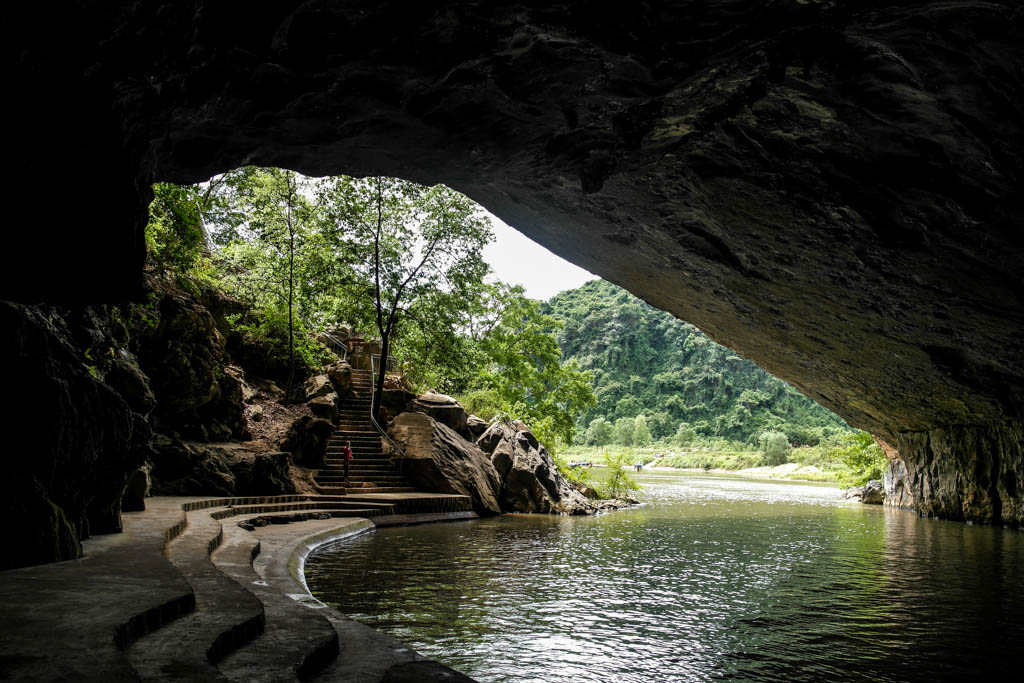
Around Phong Nha, there are numerous other caves that you can explore:
- Phong Nha Cave
- Wine Cave
- Tien Son Cave
- Paradise Cave
- Hang Va Cave
Bonus: Phong Nha is a good stop to break up the journey between Hue and North Vietnam so you won’t have to travel 12+ hours.
Day 15-17: Ninh Binh (Tam Coc)
The area around Ninh Binh is one of the most outstandingly beautiful in all of Vietnam. It’s also one of my favorite regions.

You will indulge in karst scenery, bioreserves, boat rides, impressive temples (again), some old-timey history and the occasional cave.
Often called “Ha Long Bay on Land“, the region around Tam Coc, Van Long, and Trang An will certainly awe you!
Here are some notable places to visit:
- Tam Coc boat ride
- Van Long boat ride (best of the 3 if I say so myself)
- Trang An boat ride
- Thung Nham Bird Valley
- Hang Múa
- Bai Dinh Pagoda
- Bich Dong Pagoda (the name is kinda funny, no?)
- Ancient Capital of Hoa Lư
- Cycling around the countryside
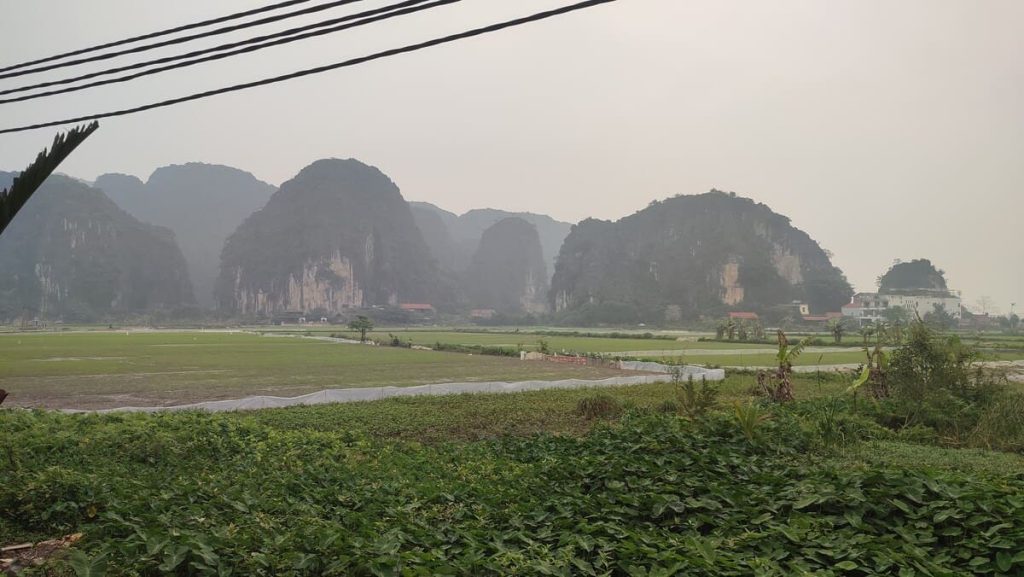
Day 17-20: Sapa
Why not go to Hanoi first, you may ask? Logistics and saving some cash – there is a direct overnight bus from Tam Coc to Sapa which means you don’t have to go to Hanoi twice.
Sapa is as not-Vietnam as any place within Vietnam can be. It’s far north, it’s at a high altitude, and it’s home to many minority groups. There is proper winter here! The highest peak – Fansipan – is here. Sometimes it gets so foggy that you cannot see past 3 meters in front of you.
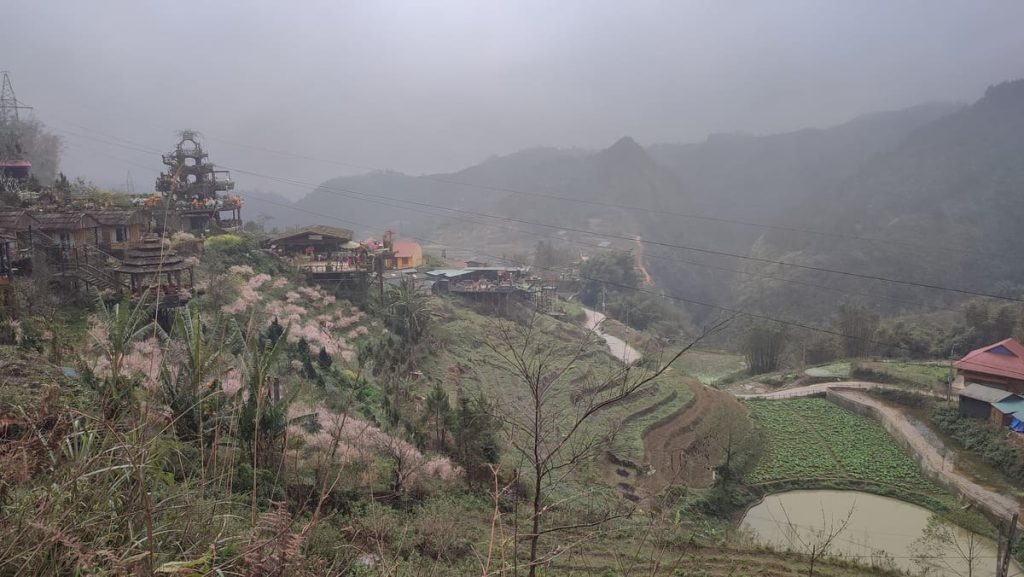
Treks with local Hmong, Tay, Red Dao, or any of the other tens of minority groups will give you the best experience in and around Sapa. My advice is to NOT book any tours before you go. Simply walk around the streets of Sapa when you arrive and negotiate with an actual local – it’s usually a trek to their village, then some authentic experience like cooking a meal or weaving a basket or something, then spending the night at a cozy homestay.
If you decide to stay just in Sapa plus the nearby Cat Cat Village, everything may seem fake and created just for tourists. That’s true. Overtourism is a thing even in far-flung Sapa.
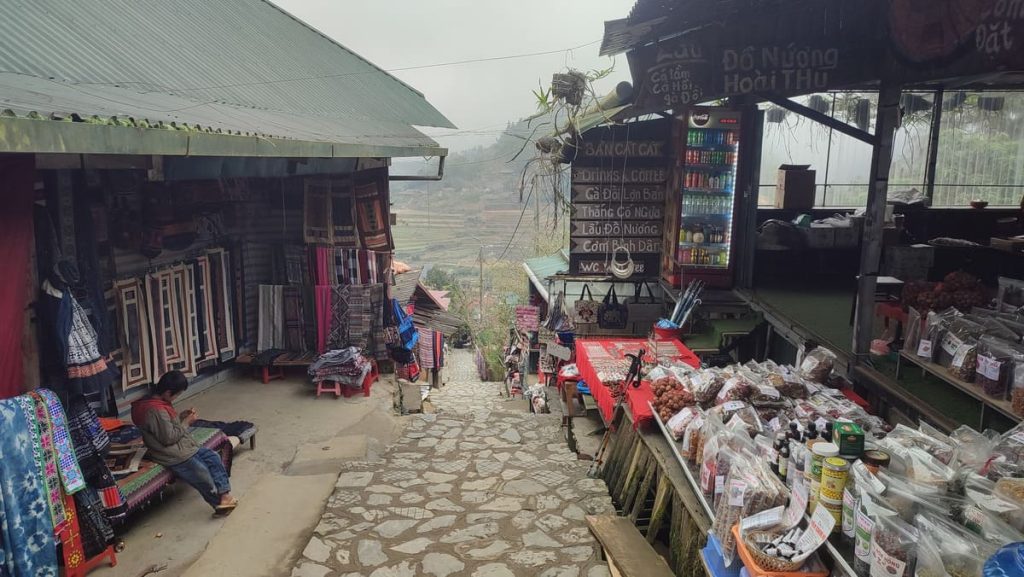
But do venture a bit out, go off the beaten track, and avoid the hordes of local tourists that actually look down on the local minorities even though they come to visit their region and you may have genuinely authentic experiences and stories to tell when you go back.
I won’t leave you with things to do or see around Sapa – I believe this region is better explored without a plan and without a list.
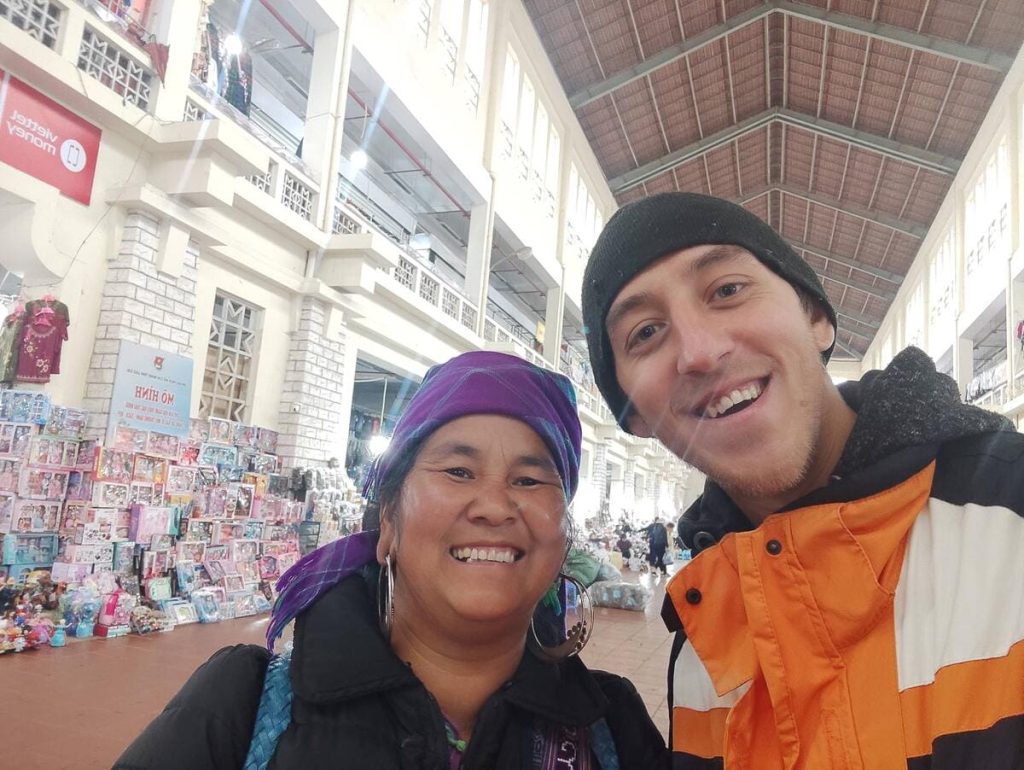
Day 20-25: Ha Giang Loop
There is a direct daily minibus from Sapa to Ha Giang, which takes around 8 hours.
The Ha Giang Loop used to be that well-hidden secret that became a super popular backpacker destination. I am split between what to think – on one side I wish it had remained hidden and less-visited, on the other – would I have known to visit if it were?

The Ha Giang Loop became my favorite experience in Vietnam. Riding a motorcycle on these roads with the impressive scenery, drastic drops, the river, the minorities, the markets, and the fact that the region is so far… all these characteristics make for an awesome adventure.
I have an in-depth guide on riding the Ha Giang Loop by yourself which will give you an awesome 4-day itinerary and all the practical information.
As for my top tip: do not overestimate your driving abilities! The Ha Giang Loop is amazing but dangerous, though I wouldn’t have it any other way.

Day 25-26: Hanoi
To the best of my knowledge, there isn’t a direct bus that goes from Ha Giang to Ha Long Bay, so you will have to make a stop in Hanoi anyway. It’s a fair distance away, so it’s best to spend 1 night in Hanoi and go to Ha Long Bay the following day.
Alternatively, you can go to Ha Long Bay on a day trip. That’s what I did the first time I went there. They pick you up in the morning, travel 4 hours to Ha Long, put you on a boat, do 2 or 3 stops on different islands (a cave and a beach), and bring you back. More about that…
Day 27-28: Ha Long Bay
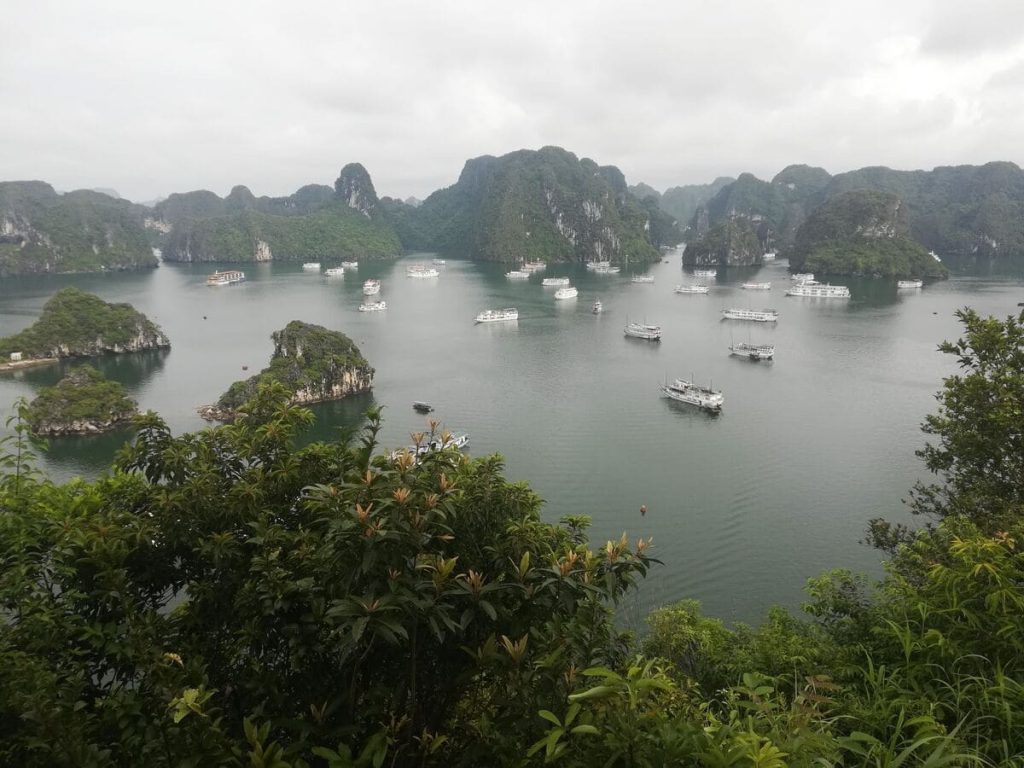
…aaand you’ve come to one of the most visited and most recognizable places in Vietnam!
Another UNESCO heritage site, Ha Long Bay is also another ultra-popular and overly touristic site in Vietnam. Due to this fact, you can easily have a lousy experience. It’s still marvelous though.
You can book any variant of a tour from any tour operator in Hanoi. Doing a trip yourself is not hard and will cost you less but also involves a bit of navigating public transport yourself and figuring out stuff. Take a bus to Ha Long City, then go to the boat pier and negotiate directly. If you need the convenience, here are the top picks:
For a much cheaper alternative, you know, the true backpacker way, take a public ferry to Cat Ba Island for less than 5$. The route is basically the same as the one the ships take and you will see much the same scenery. Yes, it shorter, but you can totally take it back too!
Read more about the ferry to Cat Ba Island here.
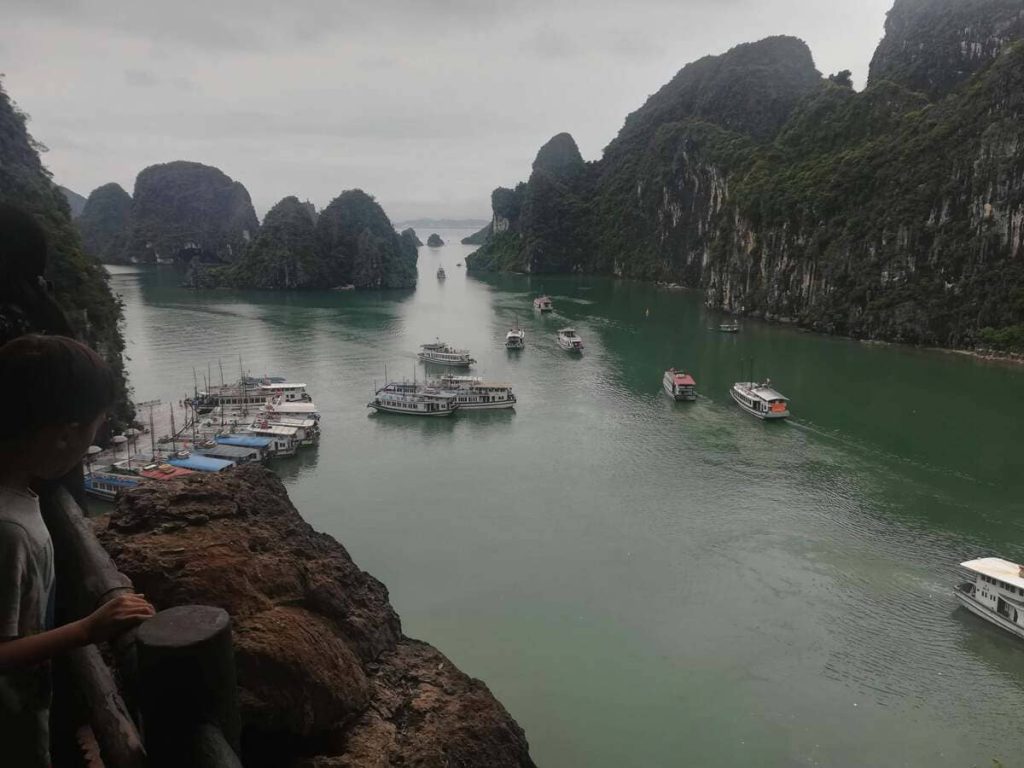
Day 28-30: Hanoi
The end of your adventures backpacking in Vietnam is near. You’re in Hanoi – the capital and the heartland of the Kinh Vietnamese people.
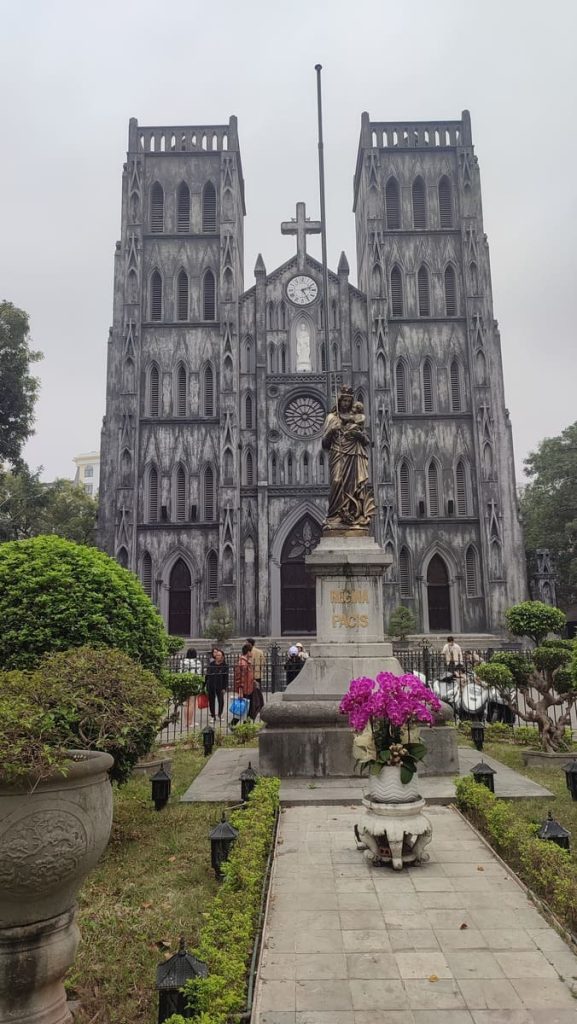
It’s a very charming city with small alleys, old architecture, steeped in history and beauty lurking around every corner. The Old Quarter is a marvel and I love that they’ve made it car-free from 6:30 p.m. to midnight from Friday to Sunday. It’s just such a nice area to walk around in! The Lake, the Cathedral, the “Beer Street”, Hanoi is lively and magical, especially at night!
Some notable things to visit in Hanoi:
- Hoan Kiem Lake + Ngoc Son Temple
- St. Joseph Cathedral
- The Temple Of Literature
- Ho Chi Minh’s Mausoleum
- Long Bien Bridge
- Tran Quoc Pagoda
- The Imperial Citadel of Thang Long
- Hanoi Opera House
- Watch a Water Puppet Theater
- Drink beer at Ta Hien Corner
- Watch the train pass at Hanoi Train Street (Approximate times: Mon to Fri at 6:00 and 19:00. On weekends at 9:15, 11:35, 15:20, 17:45, 18:40 and 19:10)
- Hoa Lo Prison
- Dong Xuan Market

Logistics of Backpacking in Vietnam
The nitty-gritty of backpacking in Vietnam + useful tips and some links to resources.
Best time to travel
Notice how long Vietnam is? That also defines the variable weather.
In the south, you won’t ever experience cold. The rainy season is from June to November. Short bursts of rain followed by sweaty, humid sun. It’s not ideal but it’s not disastrous either.
In Central Vietnam, the rainy season is from September to December. Sometimes it can get quite bad with rain flooding streets and creating an impassable obstacle.
Once you cross the Hai Van Pass between Da Nang and Hue (going north), the weather palpably changes. Whereas you may not need a warm hoodie in December in Da Nang, you most certainly need a light jacket (or more) in Hue. The more north you go, the colder it becomes.
In North Vietnam, winter is a thing. Places north of Hue (Hanoi, Sapa, Ha Giang, Ha Long Bay, etc.) get frosty in December and January. You will need winter clothing for Sapa for example!
On the other side of the calendar, the rainy season hits north Vietnam in the summer months – June, July, and August.
The best month for this Vietnam Itinerary
If you want to see everything and experience good weather everywhere, visit Vietnam in February.
The South will be dry and as you go north, temperatures will not drop as much. By the time you reach Sapa, it will be late February or early March and it won’t be super cold anymore.
Moreover, February is the dry season in all regions of Vietnam so you don’t have to worry about rain, landslides, and floods no matter where you are.
Visa Requirements
Some nationalities, most notably other ASEAN countries and most countries of Western Europe are visa-exempt.
The rest need a visa. There is no visa on arrival and the e-visa takes a few days to process. This is the only official link for the Vietnam e-Visa. At least it’s cheap – only 25 USD for 30 days or 50 USD for a multiple-entry 90-day visa.
Mobile Internet
To stay connected in Vietnam, get a local SIM card. This is the cheapest option. If you get it at the airport, a 5 GB / day, valid 30 days SIM card costs around 300.000 VND (~12$) but if you wait just a little bit and buy it from an office in the city, you will only pay 180.000 VND (~7$).
Alternatively, you can go for the super convenient e-SIM option. I recommend Airalo – 20 GB for 30 days costs 32 USD. Check the other Airalo packages for Vietnam e-SIM.
Money and Budgeting
You need Vietnamese Dong (VND) to transact in Vietnam. The best places to exchange your foreign currency are gold shops in big cities.
If you want to spend the least amount in fees, withdraw VND from ATMs of VPbank or TPbank – these are the only 2 that don’t charge access fees.
Check out my detailed guide to money in Vietnam for tourists.
As for the budget you’ll need, Vietnam is one of the cheapest countries in the world. Beer is as cheap as 5000 VND (0.2$), most museums and attractions are priced at 40.000 VND (1.6$), and hostel beds are between 25.000 and 100.000 VND (1-4 USD). Food is quite cheap too – bahn mi sandwiches go for around 10.000-20.000 VND (0.4-0.8$) and noodle soups around 40-50k (~2$).
For more information, check out my Budget Report from my 1 month in Vietnam.
Transportation
Sleeper Buses
Learn everything about Vietnam’s sleeper buses in the linked guide.
Vietnam is the easiest country in Southeast Asia when it comes to transport. You won’t have to navigate confusing timetables and decipher bus station routes.
Simply book your tickets from your accommodation – you will get picked up and dropped off without having to take any other transport.

If you want to do it yourself, I recommend you use Phuong Trang (FUTA) buses. They operate a fleet of sleeper buses all across Vietnam. The best thing about them is that a transfer TO AND FROM the bus station is included in the price!
Trains
For trains, book directly at the Vietnam Railways website.
The main railway line in Vietnam runs from Hanoi to Ho Chi Minh City and takes around 35 hours. You can take the train between any 2 major cities on this line.
North of Hanoi, the line between Hanoi and Lao Cai (for getting to Sapa) is quite popular and a good alternative to the sleeper bus.
I’ve taken a sleeper train once in Vietnam and even though I booked a 3rd class ticket, the experience was quite good – well-aerated, air-conditioned, and new linen + pillow for every passenger.

Public transport
In Hanoi, Ho Chi Minh City, and Da Nang, there is public transportation in the form of buses and minibuses that cover pretty much any place you’d want to go to.
Routes are uploaded on Google Maps, so all you need is to ask it for directions.
Payment is by cash on the bus – there is an attendant inside who will take your 6-8k VND and issue a ticket.
Taxis
Honestly, don’t bother with regular taxis. The chance to be scammed is too high. Stick to Grab – the Southeast Asian equivalent of Uber. Rides are super cheap and reliable.
Scams
There are scams everywhere in Southeast Asia and it cannot be any other way. In Vietnam, even more so.
Some locals will try to overcharge you for everything – from food and transportation to souvenirs and trips. Always doubt you’re getting a fair price because usually, you won’t be.
Purse snatchers, money sleigh-of-handers, not-so-free-picture-takers, motorcycle snaggers, overpriced, shoe shiners, luggage fee chargers, etc, etc. The list goes on. You can check these 17 scams in Vietnam to get an idea.
You will be scammed in Vietnam at least a few times no matter how careful you are. Scams are just everywhere in this country. Be vigilant and avoid the obvious ones, as well as those that will damage your wallet way too much – the rest you can consider “a cultural experience”.
Where to Stay in Vietnam (best hostel in each place)
| Place | Best Lodging | Why it’s the best |
|---|---|---|
| Ho Chi Minh City | Saigon 1979 Hotel | Perfect location yet not too loud. Free breakfast, awesome staff. |
| Can Tho | Enjoy Mekong Hostel | Cheap, good AC, perfect location, lovely host. |
| An Binh Island | Nam Thanh Homestay | Awesome breakfast, free bicycles, attending host. |
| Mui Ne | iHome Backpacker Resort | Super cheap, swimming pool, events, free beer every day. |
| Da Lat | Dalat Family Hostel | 1.5$ beds, pool, gym, amazing atmosphere. |
| Nha Trang | The Alley | Small, cute, cheap, social in a perfect location. |
| Da Nang | Outpost Bar & Hostel | Super new (opened 2024), great location, awesome amenities, free breakfast and chill vibes |
| Hoi An | Hoi An LoveLy Hostel | Cheap for Hoi An, spacious rooms, free breakfast, free beer, wonderful staff |
| Hue | Hue Happy Homestay | Perfect location, free beer, social atmosphere, good AC. |
| Phong Nha | Central Backpackers Hostel | Helpful staff, free breakfast buffet, free beer, spacious and clean rooms, privacy curtains, pool. |
| Tam Coc | Tam Coc Little River Bungalow | Relaxing, nice rooms, pool, organized family dinner, easy to rent a motorcycle or a bicycle. |
| Sapa | Tavan Chopai Homestay | Run by friendly ethnic minority locals who can organize anything and everything for you, set in a marvelous area with spectacular views, pool, bar, free breakfast. |
| Ha Giang | Ha Giang Ali Hostel | Newest bikes ever, Ali will give you all the practical info about the Loop and provide support during it. Free luggage storage and comfy beds. |
| Hanoi | Old Quarter View Hanoi Hostel | Awesome location and in a quiet alley, many activities every day, helpful staff, free walking tour, free beer. |
Other Notable Places in Vietnam
Did I say that Vietnam is a massive country? I feel I have but here we go again – even with 30 days, you won’t be able to visit everything in Vietnam. There will always be that one place off the beaten track that just sitting there waiting to also be given the same attention that Hoi An and Ha Long Bay receive.
Some are true “hidden gems”. Others are boring and deserve their lowly status – not everything can be exciting and worthwhile! Here are just a few I haven’t included in the 1 month Vietnam backpacking itinerary above:
- Phu Quoc – A tropical island complete with resorts, beaches, and amusement parks.
- Quy Nhon – a very chill seaside town with beautiful beaches but not much else to do.
- Kon Tum – some call it Sapa in the south because of the many minorities living there with their peculiar community houses.
- Mai Chau – scenery similar to Tam Coc but waaaaaay less touristy.
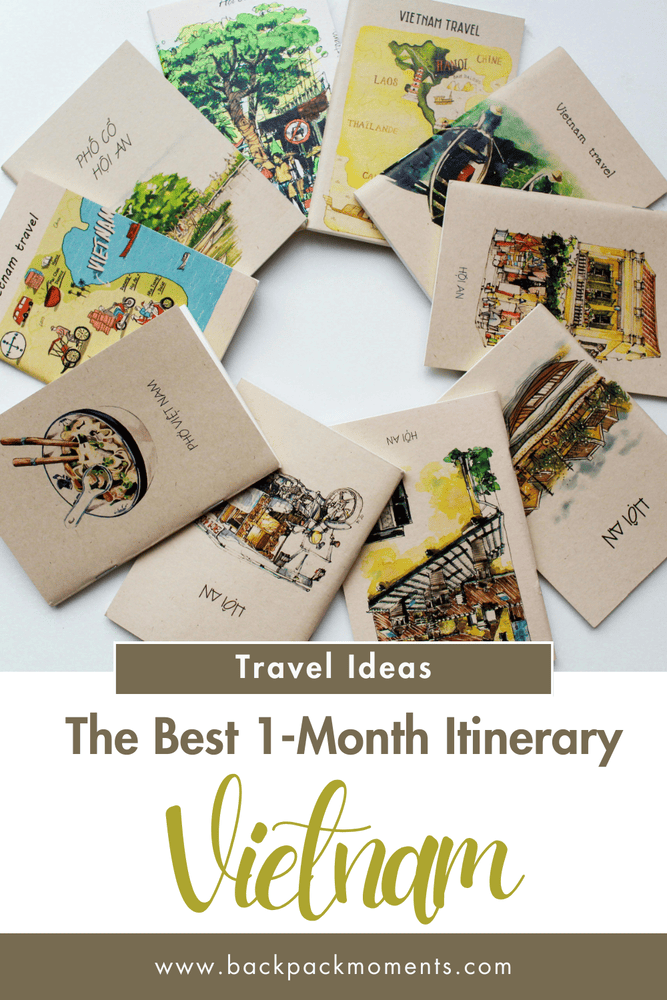


Simon, thanks for sharing your travel xp! I will certainly check out your top must see’s in VietNam. I will be there 3 months and i hope to have as good of a trip as you have enjoyed. Cheers, and happy hiking~!~